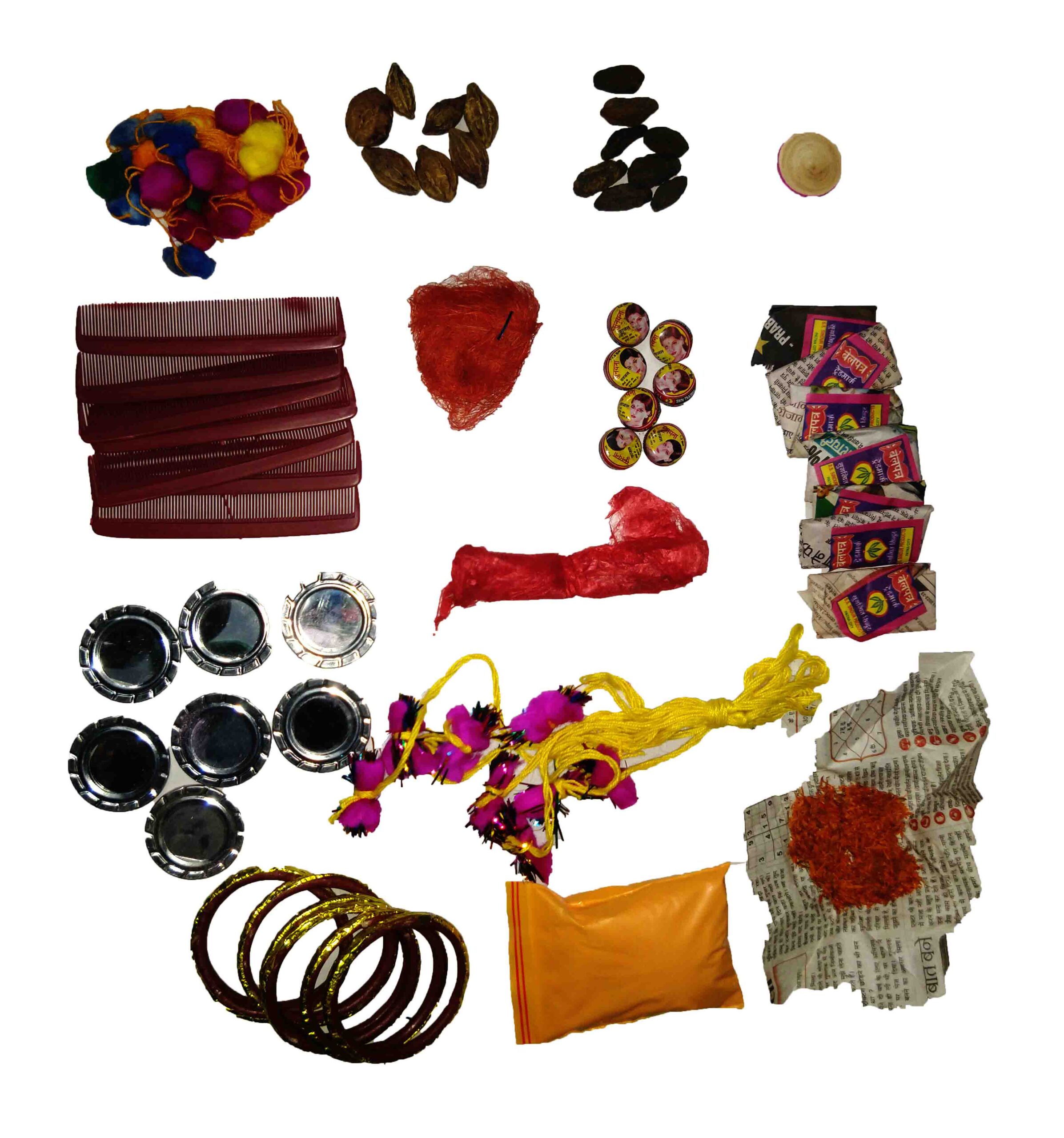Share this Article
Introduction
Among Nepal’s many ethnic groups, the Tamang people hold a deeply spiritual relationship with nature. Living in the hilly and mountainous regions surrounding the Kathmandu Valley — from Nuwakot, Rasuwa, Dhading, and Kavrepalanchok to Sindhupalchok — the Tamangs have preserved a unique blend of ancient animism, ancestor veneration, and Buddhist elements. At the heart of their worldview lies the belief that the natural world is alive with spirits — the mountains, rivers, trees, and especially stones are not inert matter but sacred vessels of energy, memory, and spiritual presence.
In Tamang shamanic practices, stones (dhunga) occupy a central role as mediators between the human and the spiritual realms. They are used in healing, divination, protection, and rituals of life and death. These stones are not merely physical objects; they are living entities imbued with consciousness and power. For centuries, Tamang shamans, known as bompo or jhankri, have relied on stones as essential ritual tools, as repositories of ancestral spirits, and as protectors of the community.
This article explores in depth the ritual use of stones in Tamang shamanism — how they are selected, consecrated, and used in ceremonies; what symbolic meanings they carry; and how they connect the Tamang people to the unseen world that sustains their lives and traditions.
Tamang Cosmology and the Place of Stones
Tamang cosmology is a layered universe populated by spirits, ancestors, deities, and elemental forces. The world is divided into the upper realm (of celestial deities), the middle realm (of humans and nature spirits), and the lower realm (of the dead and subterranean beings). The jhankri acts as a bridge who travels between these realms during trance or ritual.
Within this cosmological map, stones represent the stability and permanence of the earth element — they embody the patience and endurance of nature. Yet, for the Tamang, a stone is not dead or passive; it breathes, feels, and listens. Certain stones are believed to be manifestations of deities or ancestors, while others act as portals to communicate with the spirit world.
The Tamang believe that powerful stones can absorb spiritual energy from their surroundings — from mountains struck by lightning, rivers charged by monsoon rain, or ancient trees rooted near sacred grounds. Thus, a stone is not merely found; it reveals itself to the shaman who is spiritually attuned enough to perceive its power.
The Shaman’s Stones: Ritual Tools and Spiritual Companions
Every Tamang shaman keeps a personal collection of stones, often stored in a ritual pouch (thokpa) or placed on an altar inside the home. These stones are not ornamental; they are spiritual companions. The shaman may have one main stone that serves as a guardian spirit and several others for healing, protection, or divination.
When a young shaman is called by the spirits — often after a severe illness or visionary experience — part of their initiation involves finding their “living stones”. Elders or mentors guide the novice to sacred sites, riverbanks, or caves, where they meditate or dream until the stones reveal themselves. Sometimes the stones appear in visions; sometimes they mysteriously glow, move, or emit warmth.
Once found, the stones are consecrated through a ritual involving incense, animal sacrifice (traditionally chicken or goat), and chanting. The shaman invites the spirits to inhabit or bless the stones, turning them into active ritual allies. From that moment, the stones become part of the shaman’s identity — they are consulted for guidance, used in healing ceremonies, and carried during trance journeys.
Stones as Embodiments of Spirits
In Tamang belief, the line between object and being is fluid. A stone can become a seat of a deity (deuta) or the dwelling of an ancestral soul (phapha). In some cases, a stone is regarded as the incarnation of a local mountain spirit, especially if it has unusual markings or shapes.
There are different types of sacred stones used by shamans:
- Phesing Dhunga (Spirit Stones) — used as the dwelling place of protective deities or guardian spirits. These stones are often smooth, oval, and found near waterfalls or mountain passes.
- Chhintang Dhunga (Healing Stones) — used in curing rituals, believed to draw illness or negative energy out of a patient’s body.
- Ritual Pebbles (Latho) — used as miniature effigies or spiritual markers during rites, representing spirits or deceased ancestors.
- Thunder Stones (Bijuli Dhunga) — stones said to have fallen from the sky or created by lightning; they hold immense energy and are used for protection against evil spirits.
During rituals, these stones are placed on altars, washed in milk or alcohol, and adorned with threads, vermilion, and rice grains. The shaman sings to them as if to old friends — acknowledging their presence, inviting their strength, and asking for their blessing.
Healing and the Role of Stones
Healing in Tamang shamanism is based on restoring balance between the physical and the spiritual worlds. Illness is often seen as the result of spirit intrusion, soul loss, or anger of ancestral beings. Stones play a crucial role in diagnosing and treating such conditions.
The shaman begins by entering a trance state induced by drumming, chanting, and sometimes the use of sacred herbs. They communicate with their stones, asking them to reveal the cause of the illness. A specific stone might tremble, grow warm, or move slightly — signs that the spirit world is responding.
To remove negative energy, the shaman may rub the stone over the patient’s body while chanting mantras. The stone is believed to absorb the illness and transfer it into the earth. Afterward, it is washed with alcohol, milk, or water from a sacred spring to cleanse its energy. In some cases, the stone itself becomes discolored or cracked after absorbing too much illness, signifying the depth of the healing work.
Healing stones are also placed in bowls of water or oil during rituals, and the patterns that emerge are interpreted as messages from the spirits. The shaman may instruct the family to keep the water and sprinkle it around the house to ensure ongoing protection.
Divination with Stones
Divination — the art of seeking knowledge from the spiritual realm — is another major use of stones in Tamang shamanic practice. A shaman may throw or arrange stones in specific patterns to interpret signs about a person’s future, the cause of a problem, or the will of the spirits.
This form of divination is known as “dhunga herne” — literally, “seeing with stones.” The shaman casts a set of small stones on a flat surface and observes how they land. Each stone may represent a particular spirit, element, or direction. The way they align indicates harmony or conflict between forces. The shaman interprets these signs through intuition and ancestral guidance.
Sometimes, divination stones are used together with animal bones, grains of rice, or metal rings. The combination of these materials helps the shaman decode complex questions — from crop fertility to marriage compatibility to impending dangers.
For the Tamang, these rituals are not superstition; they are a sophisticated spiritual language that connects human life to cosmic order.
Protective Power of Stones
Protection is another core function of ritual stones. Many Tamang households keep sacred stones at the entrance of their homes or near the hearth. These are believed to ward off evil spirits, wandering ghosts, and misfortune.
When a family faces repeated illness, conflict, or misfortune, a shaman performs a protective stone ritual. During this ceremony, special stones are chosen, anointed with oil, and tied with colored threads. Offerings of alcohol, blood, or incense are made to awaken the spirits within them. The stones are then buried at the threshold of the house or placed in a high corner of the room to serve as guardians.
In certain villages, boundary stones (sema dhunga) mark the spiritual limits of the community. These stones are ritually renewed every few years during festivals. The ceremony involves chanting, drumming, and communal feasting — reaffirming the community’s relationship with the spirits who protect their land.
Funeral and Ancestor Rituals Involving Stones
In Tamang funerary tradition, stones also play a symbolic role in connecting the living with the dead. After cremation or burial, small stones may be gathered from the site and placed on an altar to represent the departed soul. These are not tombstones but spiritual markers — reminders of the continuity between the ancestors and their descendants.
During annual ancestor worship (phapha puja), families offer food, drink, and incense to these stones. The ritual ensures that ancestral spirits remain benevolent and that the family line remains blessed. The shaman may use a particular ancestral stone as a communication tool, channeling the voice of the ancestor during trance.
In some villages, communal stone mounds (chhorten-like structures) are built to honor heroic ancestors or shamans who served the community. Each stone added to the mound is a symbolic prayer for protection and memory.
The Symbolic Language of Stones
In Tamang philosophy, stones symbolize permanence, patience, and spiritual endurance. While water flows and fire burns, stones remain — enduring through time. They represent the foundation of existence and the resilience of the Tamang people who have survived hardship, migration, and change.
At a symbolic level, the stone also embodies the union of the material and spiritual. It is both matter and spirit — both earth and deity. When a shaman holds a ritual stone, they hold the universe in miniature form, containing the balance of the five elements (earth, water, fire, air, and ether).
Colors, shapes, and textures of stones also carry meaning. A round stone represents completeness and healing, while a sharp-edged stone may symbolize cutting away negativity. Dark stones are used for absorbing evil, while light-colored stones signify purity and divine presence.
Sacred Geography: Where the Stones Come From
The origin of a stone determines its spiritual potency. Tamang shamans often travel to sacred sites to collect stones — from the banks of the Trishuli River, the cliffs of Langtang, or near old monasteries where the boundary between the human and divine is thin.
Some of these sites are associated with local deities (ban jhankri or hill spirits) who inhabit caves, waterfalls, or boulders. Shamans make offerings before collecting stones, asking permission from the land spirits. It is believed that taking a stone without ritual permission can anger the spirit of the place and bring misfortune.
Particular value is given to “sky stones” or those found after thunderstorms, as they are believed to have been struck by lightning and charged with celestial energy. Similarly, stones found in river confluences are considered to embody harmony and balance between different elemental forces.
The Ritual Process: Activation and Maintenance
Possessing a sacred stone is not enough; it must be activated and maintained through ritual care. Shamans regularly feed their stones with offerings — drops of alcohol, grains of rice, flower petals, or the smoke of juniper incense.
During major festivals or before healing ceremonies, the stones are bathed in holy water and anointed with red vermilion and oil. The shaman chants mantras, calling upon the spirits within to awaken and assist. Neglecting one’s ritual stones is believed to cause spiritual imbalance or loss of power.
Over time, the relationship between the shaman and their stones becomes intimate. Some speak to their stones daily, listen to their sounds during drumming, and receive dreams or visions from them. When a shaman dies, their stones are often passed down to a chosen apprentice or buried with them — ensuring the continuity of the spiritual lineage.
Syncretism: Stones in Buddhist-Tamang Practices
While Tamang shamanism is rooted in animism, it coexists harmoniously with Tibetan Buddhism, which has heavily influenced Tamang culture. Many Tamang villages have both Buddhist lamas and shamans working side by side — one performing monastic rituals, the other dealing with folk and spiritual healing.
Interestingly, the use of stones overlaps between the two traditions. Buddhist mani stones inscribed with sacred mantras like Om Mani Padme Hum are also revered by Tamangs as carriers of divine energy. Shamans sometimes use Buddhist-engraved stones in their altars, recognizing the power of sacred words carved into rock.
This blending of shamanic and Buddhist symbolism creates a uniquely Tamang spirituality — one that honors the earth while embracing cosmic compassion.
Contemporary Transformations
In recent decades, modernization, migration, and education have changed how Tamang people view their shamanic traditions. Many young Tamangs now live in cities, away from the ancestral villages and sacred landscapes that gave birth to these rituals. Some see shamanic practices as superstition, while others are rediscovering them as symbols of cultural pride and ecological wisdom.
Scholars and cultural activists have begun documenting these traditions to preserve them from disappearing. In some areas, shamans still perform stone rituals during community festivals or healing sessions, though the use of animal sacrifice is gradually declining. Younger generations who learn these traditions often adapt them to modern contexts — using milk, flowers, or symbolic offerings instead of blood.
At the same time, environmental consciousness has brought new appreciation for animistic beliefs. The idea that stones, rivers, and forests are alive resonates with modern ecological values, showing how ancient Tamang spirituality carries deep lessons for sustainable living.
Cultural and Spiritual Significance Today
For the Tamang community, the ritual use of stones is not just a religious act but an affirmation of identity. It expresses their relationship with land, ancestors, and unseen forces that shape their world. In an era of rapid change, these stones symbolize continuity — connecting generations across time.
Even when urban Tamangs cannot perform full shamanic rituals, they may still keep a small stone from their ancestral home on their altar or wear it as an amulet. It serves as a reminder that their heritage is grounded in the earth itself.
From an anthropological perspective, the Tamang use of stones offers profound insight into human spirituality’s material dimension — how physical objects can embody invisible forces and how ritual interaction with nature sustains psychological and communal balance.
Conclusion
In Tamang shamanic practice, stones are far more than objects of nature. They are sacred beings, healers, protectors, and teachers. Each stone carries a story, a spirit, and a purpose — from absorbing sickness to guarding a home, from guiding the shaman’s journey to remembering the dead. Through them, the Tamang express a worldview in which the spiritual and material worlds are inseparable.
As modernization continues to reshape Nepal, these ancient traditions remind us that spirituality is not confined to temples or scriptures — it lives in the stones beneath our feet, the rivers that flow beside us, and the breath of the earth itself. The Tamang shaman’s stones speak a universal truth: that the world around us is alive, and when we learn to listen, even a silent rock can become the voice of the divine.
Categories:
Culture & Traditions
Tags:
stones
,
TamangCulture
,
SacredNature







